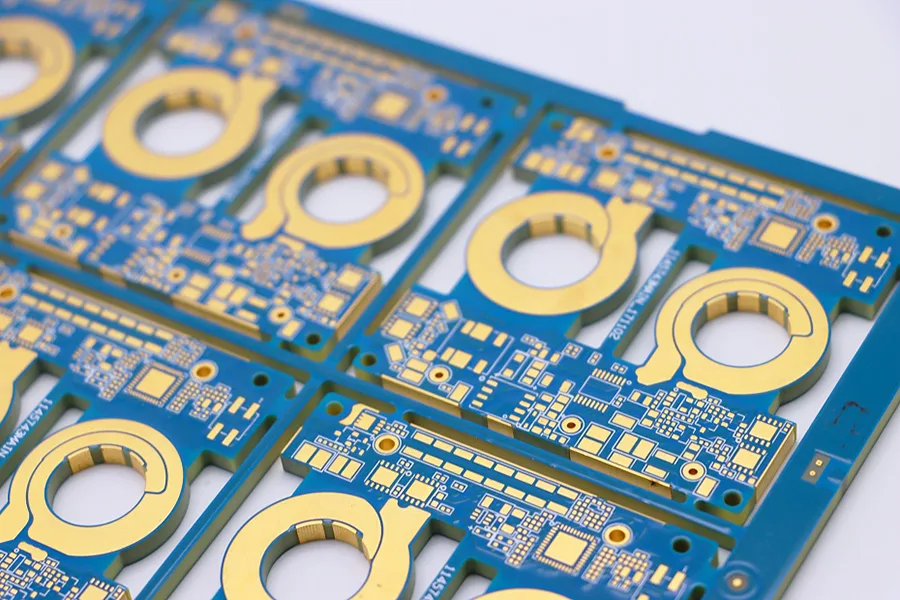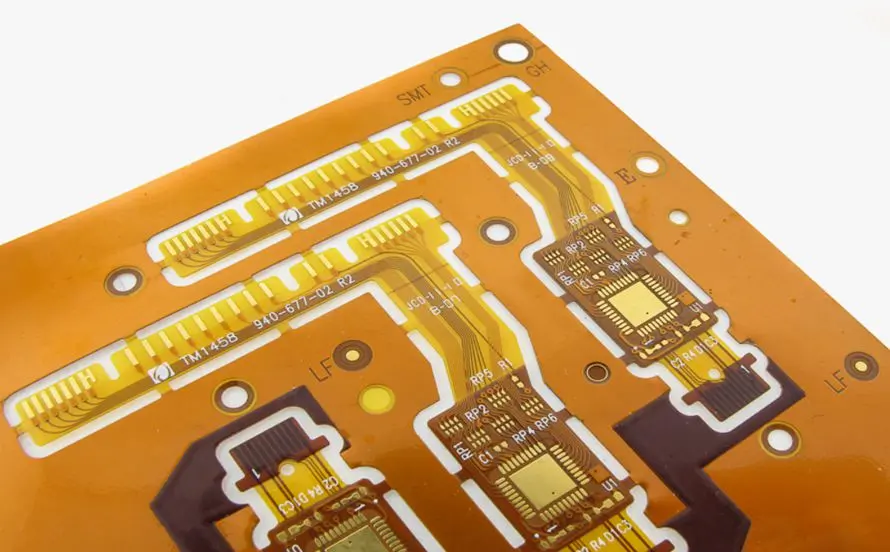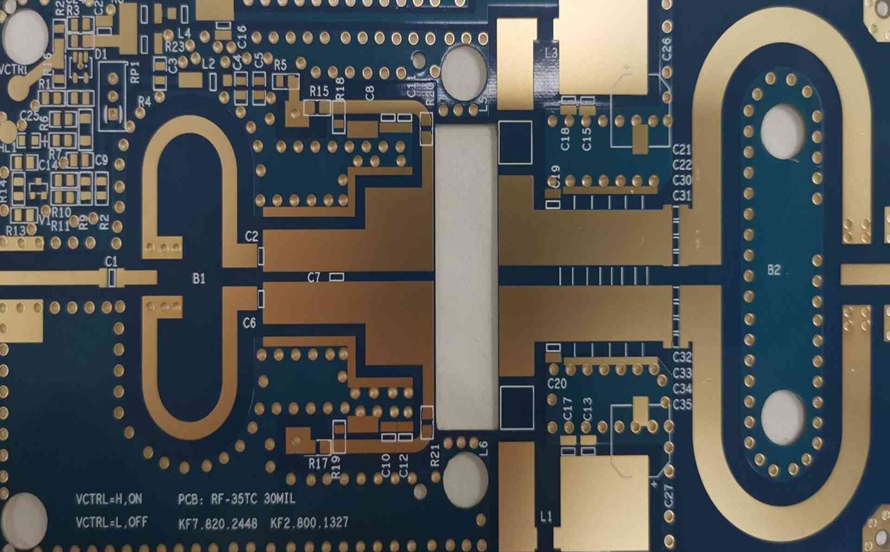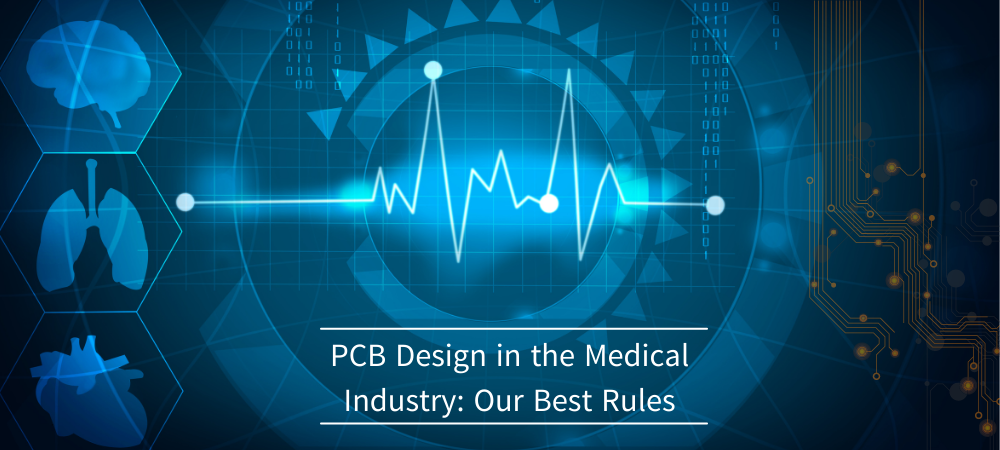SiC PCB for High-Power Modules and Automotive Powertrain Systems SiC (Silicon Carbide) devices are reshaping high-power electronics. Their wide-bandgap characteristics—high breakdown voltage, fast switching, and elevated junction temperatures—push PCB substrates into thermal, electrical, and mechanical stress profiles that exceed the range of traditional FR-4 and generic high-Tg laminates.A SiC PCB supporting traction inverters, onboard chargers,...
HomeCategory
PCB Manufacturing Services | High-Quality PCB & PCBA - KKPCB
High-frequency Wi-Fi 6/7 antenna modules in modern laptops demand PCBs that maintain low insertion loss, precise phase alignment, and robust EMI suppression within compact layouts. TLY-5 PCB laminates, with a dielectric constant of 3.45 ± 0.03 and dissipation factor of 0.0012 @10 GHz, provide low-loss RF transmission and dimensional stability essential for multi-band performance. KKPCB...
Heavy Copper PCBs: High-Current Solutions for Power Electronics As electronic systems evolve toward higher power density, stronger reliability requirements, and increasingly harsh operating environments, Heavy Copper PCBs have become indispensable across power electronics, automotive systems, industrial control, and energy infrastructure. Unlike standard PCBs—typically manufactured with 1oz–3oz copper—a Heavy Copper PCB is defined as any PCB...
PCB MaterialsCustomer CaseElectronics Industry NewsEngineering TechnologiesPCB DesignPCB Manufacturing
Rigid-Flex PCBs: Engineering Benefits, Key Challenges, and Advanced Manufacturing Insights from KKPCB
Rigid-Flex PCBs: Advantages, Challenges, and Engineering Insights from KKPCB As electronic systems shrink in size and grow in capability, the demand for PCB technologies that combine reliability, flexibility, and mechanical resilience continues to rise. From aerospace and defense to medical devices, consumer electronics, and industrial automation, modern products increasingly require circuits that survive vibration, bending,...
What Is a Low Loss PCB? Premium Materials, Performance Advantages & Applications In high-frequency electronics, signal integrity is everything. As data rates climb and RF systems move into the mmWave range, traditional FR-4 PCBs quickly become inadequate due to excessive dielectric loss, copper loss and thermal instability. At KKPCB, we engineer Low Loss PCBs specifically...
Essential RF Amplifier Knowledge for Modern PCB Manufacturers | KKPCB As wireless communication, IoT connectivity, radar sensing, and high-speed data links continue to evolve, RF amplifiers have become one of the most critical building blocks in modern electronics. For PCB manufacturers, understanding how RF amplifiers work—and how PCB design impacts their performance—is essential to delivering...
Aerospace PCB Assembly: Requirements, Reliability, and Key Considerations Aerospace PCB assembly refers to the process of building, integrating, and testing electronic circuits on printed circuit boards designed for aviation, defense, and spacecraft systems. Because aerospace electronics operate in mission-critical environments, the assembly process must ensure absolute precision, uncompromised reliability, and long-term stability. Proper assembly not...
Medical PCB Manufacturing: Technologies, Design, and the Future of Electronic Healthcare As medical technology continues to evolve, diagnostics and treatments increasingly depend on sophisticated automated systems. These systems rely on high-precision PCBs (Printed Circuit Boards)—miniaturized, high-density circuit assemblies that integrate numerous components within limited space. To guarantee performance, medical PCB assemblies incorporate advanced design features...
Comprehensive Overview of Sensors: Definitions, Standards, Characteristics, Communication Protocols, Automotive Applications & Future Trends 01 Definition and Composition According to GB 7665-2005, a sensor (or transducer) is a device or assembly that detects a physical quantity and converts it into a usable output signal according to defined rules. A typical sensor consists of: Sensitive Element...
Radar PCB: Design Principles, Materials, Manufacturing Challenges & Key Applications High-speed PCBs stand at the top of modern circuit-board technology, spanning digital high-speed, mixed-signal, and RF/microwave categories. Among these, RF and microwave PCBs operate at the highest frequencies, making them essential for advanced applications—especially RADAR (Radio Detection and Ranging). Because Radar PCBs frequently host a...









